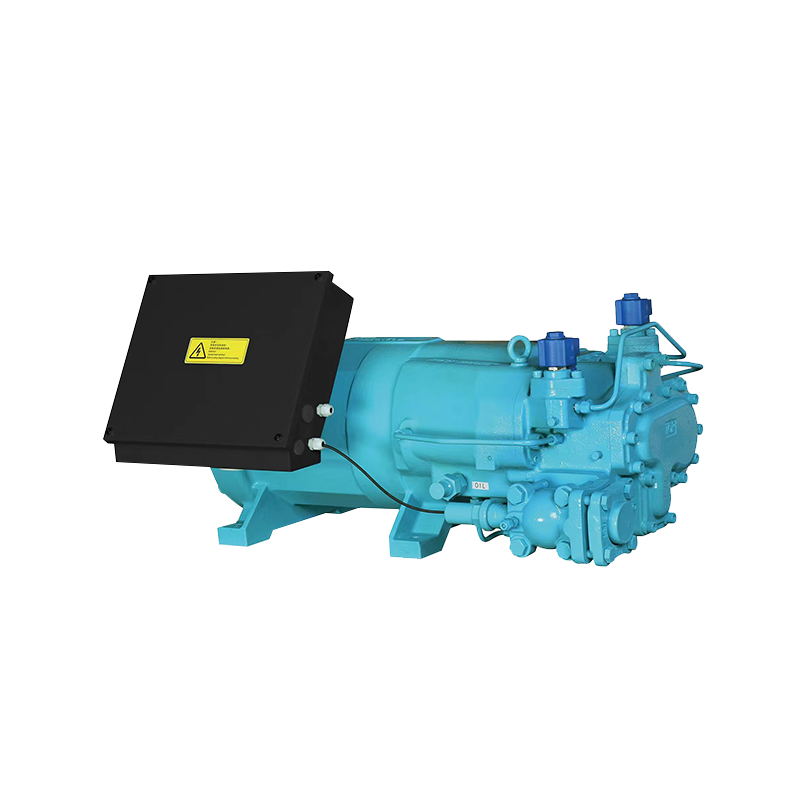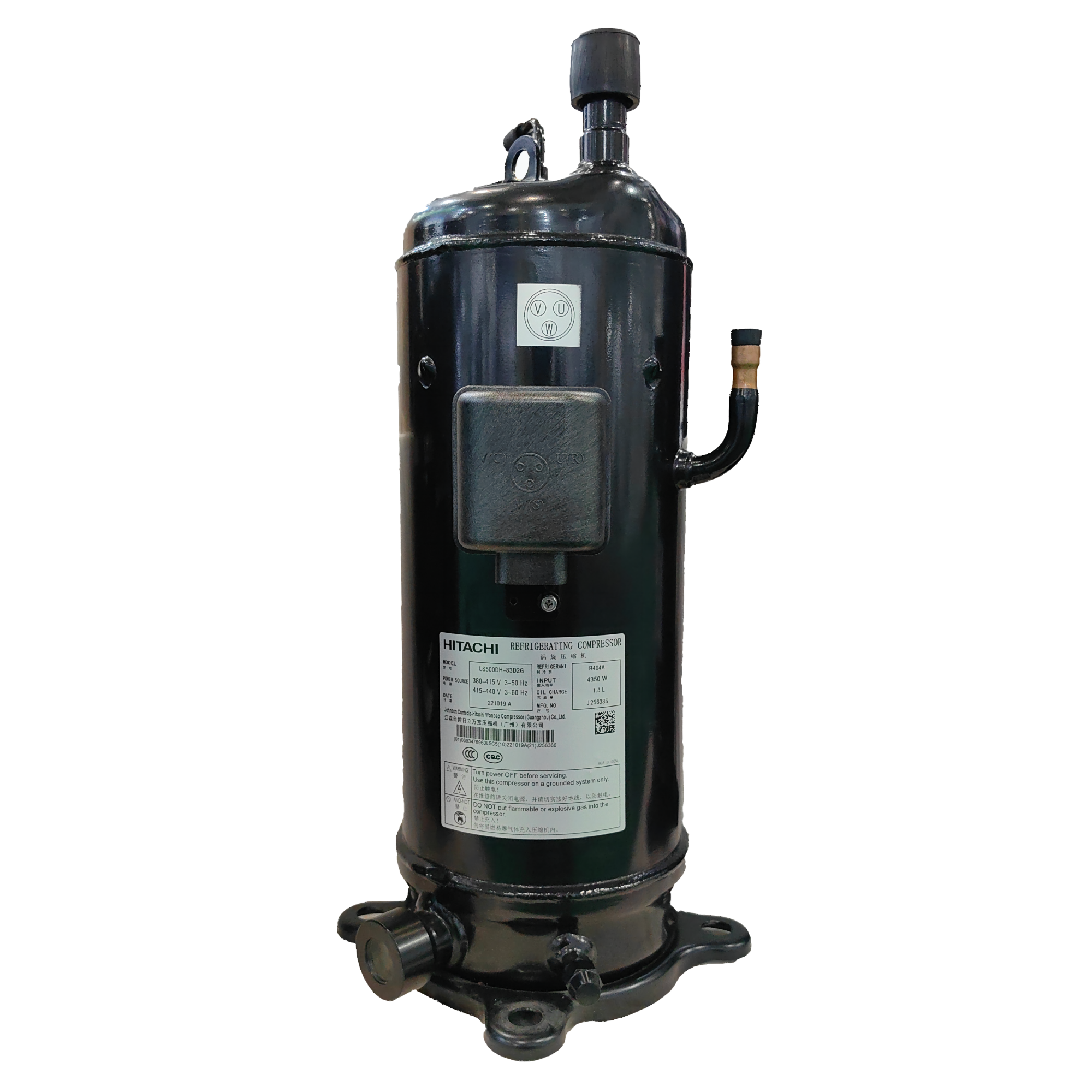The dual-flexibility design is one of the core technologies of Copeland Scroll Compressor. It is a dynamic balancing mechanism implemented in the internal structure of the compressor. This design allows the scroll disk to have a slight displacement in the radial and axial directions during operation, thereby achieving dynamic adjustment of the compression chamber to adapt to the operating requirements under different working conditions.
In a scroll compressor, two scroll disks rotate relative to each other in the compression chamber to form multiple compression chambers. Under normal operating conditions, a strict seal needs to be maintained between the two scroll disks to ensure compression efficiency and system stability.
However, due to manufacturing errors, material thermal expansion, load changes and other factors, the scroll disk may be slightly offset or deformed during operation. The dual-flexibility design is designed to solve this problem.
Radial flexibility: allows the scroll disk to have a slight displacement in the radial direction to compensate for the gap changes caused by manufacturing errors or thermal expansion.
Axial flexibility: allows the scroll disk to have a slight displacement in the axial direction to adapt to the load changes of the compressor under different working conditions.
This design enables the scroll to "self-adjust" during operation, thereby maintaining good sealing and compression efficiency.
1. Ensure the sealing between scrolls
Due to various factors, the scroll will produce slight displacement during operation. If there is no flexible compensation mechanism, it will cause sealing failure and leakage. The double-flexible design allows the scroll to fine-tune its position in the radial and axial directions, thereby maintaining good sealing performance and improving the reliability and life of the compressor.
2. Improve liquid and impurity tolerance
In actual applications, a small amount of lubricating oil, refrigerant liquid or impurities may enter the refrigeration system. Since the double-flexible design allows the scroll to be fine-tuned during operation, even if a small amount of liquid enters the compression chamber, it will not cause direct damage to the scroll. This design enhances the compressor's tolerance to impurities and reduces the risk of failure caused by impurities entering.
3. Higher life and reliability
Since the double-flexible design can effectively reduce friction and wear between the scrolls, it can extend the service life of the compressor. At the same time, due to better sealing, refrigerant leakage and energy loss are reduced, further improving the overall reliability of the system.
4. Scroll plate running-in rather than wear
During the initial operation of traditional scroll compressors, there may be a certain gap between the scroll plates, resulting in low efficiency. The dual-flex design allows the scroll plates to gradually run-in during operation, rather than wear due to excessive gaps. This "run-in" process helps improve the volumetric efficiency of the compressor, and over time, the performance of the compressor will gradually improve, showing the characteristics of "getting better with use".
5. Low noise and vibration level
Scroll compressors themselves have good running smoothness, but if there is a gap or asymmetry between the scroll plates, it may still cause vibration and noise.
The dual-flex design dynamically adjusts the position of the scroll plates to make the compression chamber more uniform, thereby reducing vibration and noise.
In addition, due to the symmetrical distribution and high-precision manufacturing of the scroll plates, the sound spectrum of the compressor is smoother during operation and the overall noise level is lower.
6. Coordination of unloading start technology
Copeland scroll compressors are usually also equipped with unloading start technology, that is, the pressure in the compression chamber is balanced before starting to avoid shock during startup.
The combination of dual-flexibility design and unloading start-up technology makes the compressor smoother during startup and shutdown, reduces the impact on the system, and further improves the stability and reliability of the system.
7. High-strength DU bearing support
In the dual-flexibility design, the movement of the scroll disk requires a stable support structure. Copeland uses high-strength DU bearings, which can run for a long time even without full lubrication, and the friction coefficient is extremely small, further ensuring the stable operation of the compressor.
In the open-type condensing unit of Copeland scroll compressor, the dual-flexibility design not only improves the performance of the compressor itself, but also has a positive impact on the operating efficiency and reliability of the entire system:
Improve energy efficiency: Due to good sealing and low friction, the volumetric efficiency of the compressor is higher, thereby reducing energy consumption.
Extend service life: Reduce the wear and failure rate of the scroll disk, and extend the service life of the entire condensing unit.
Adapt to complex working conditions: When facing complex working conditions such as liquid ingress and load changes, the dual-flexibility design can effectively respond to ensure stable operation of the system.
Reduce maintenance costs: Due to low failure rate and long life, maintenance frequency and cost are reduced.
The dual-flex design of Copeland Scroll compressor is an advanced technology that integrates sealing, reliability, durability and adaptability. It achieves dynamic balance of the compression chamber by allowing the scroll plate to fine-tune its position in radial and axial directions, thereby maintaining good performance and stability under various working conditions.

 English
English Español
Español عربى
عربى русский
русский











